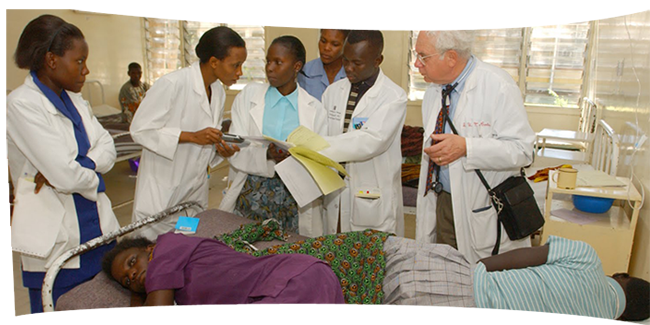
Technology Improves Healthcare Delivery in Kenya
Ozge Catalbas is the Tech Lead on the Humanitarian Software Program (HSP) at Thoughtworks; an initiative where we partner with humanitarian and social organizations, to provide voluntary software development and consulting services, pro-bono. Ozge is passionate about forming productive dev teams and delivering high quality software. She also loves to engage in Thoughtworks fight for social and economic justice. In this blog-post, Ozge shares information about the AMPATH project in the Healthcare Space and how the HSP program supports AMPATH.

AMPATH (Academic Model for Providing Access to Healthcare) is a global consortium of academic health centers working with Kenya's Ministry of Health to deliver health services and provide research. Moi University, Moi Teaching and Referral Hospital and a consortium of North American academic health centers led by Indiana University forms AMPATH. The consortium includes Brown University, Duke University, Lehigh Valley Health Network, The University of Massachusetts, The University of Notre Dome, Portland Providence Medical Center, Purdue University, The University of Toronto, and The University of Utah.
AMPATH addresses the health needs of a population of 3.5 million people in western Kenya, treating HIV infected patients at more than 500 clinics in urban and rural sites.
How does AMPATH use OpenMRS?
OpenMRS is an open source medical record system which allows medical workers to track and store medical information. It is developed by many volunteers worldwide to support health delivery in developing countries. OpenMRS is also supported by WHO, the CDC, the Rockefeller Foundation, and the President's Emergency Plan for AIDS Relief. The first ideas of OpenMRS were conceived at the AMPATH clinic in Eldoret, Kenya.
AMPATH Medical Record System (AMRS) is an implementation of OpenMRS and is highly recommended by Kenyan Ministry of Health. AMRS was launched on February 14, 2006 and as of February 2014, it has stored over 720,000 patient records, 4.9 millions encounters, and 178 millions observations.

"Our rapidly evolving program in Western Kenya is committed to fully integrated and comprehensive health care services extending from villages to hospitals. Every part of our work utilizes a single shared infrastructure - OpenMRS. It has become an indispensable backbone of every aspect of our future.” - Joe Mamlin, MD, Field Director, AMPATH
How does HSP help AMPATH? What is the current work?
Thoughtworks, as part of its Humanitarian Software Program (HSP), has been working with AMPATH since December 2013. Under HSP, we assist impactful open source projects improve the world with the help of technical volunteers. Thoughtworkers are able to help AMPATH with their OpenMRS implementation as well as other non-technical tasks. All the current tasks are captured in a public Trello board. Check it out here: https://trello.com/b/xJ9WTC5H/ampath-openmrs-tasks
Currently our focus is to finish the development of Merge Concepts Module, which allows to merge duplicate concepts in OpenMRS database. The module project is approved by Google Summer of Code 2012 and left unfinished when the author could no longer dedicate time to it in 2013. AMPATH requested Thoughtworks to help complete this project and HSP volunteers are working towards this goal.
"Thoughtworks has already helped Ampath tremendously, your program and people are top notch!" - Lauren Stanisic, International Health Data Coordinator, Regenstrief Institute, AMPATH
What is the goal of Merge Concepts Module?
Concept dictionary is an important building block of OpenMRS. It defines the medical concepts which are individual data points collected from patients. These concepts are used in forms, orders, clinical summaries, and reports. Most dictionaries evolves over time and duplicate concepts might be introduced when there is a new way of modeling the data, or multiple users adding concepts, or sometimes using multiple concepts dictionaries. Merge Concepts Module provides a way to correct these duplicate concepts. Its goal is to update all the transactional and master data that references to the duplicate concept to refer to the preferred concept.
Further information about the module and remaining work can be found here:
Disclaimer: The statements and opinions expressed in this article are those of the author(s) and do not necessarily reflect the positions of Thoughtworks.














